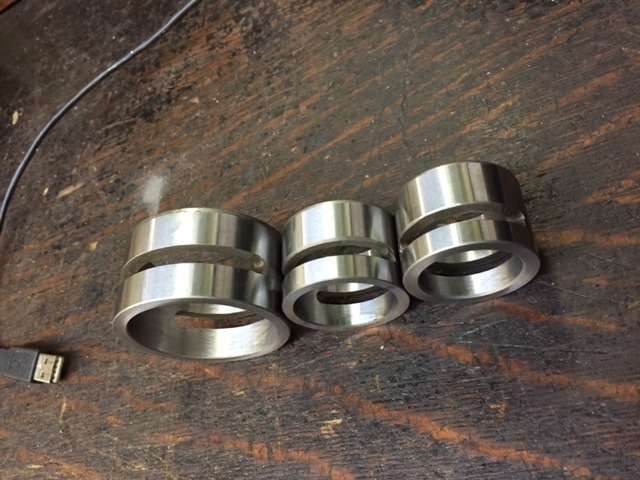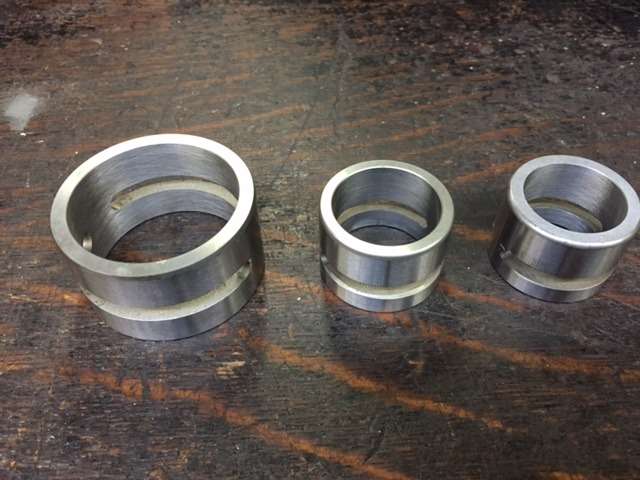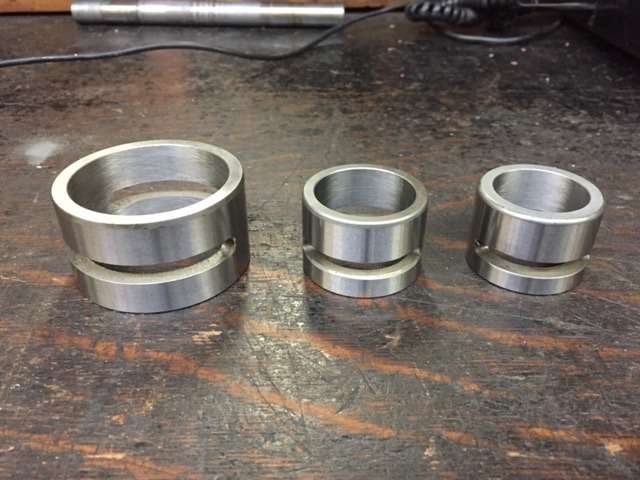Evan LaCava
Cast Iron
- Joined
- Jun 25, 2013
- Location
- NYC
I have a part that I'd like to make, for an oil pump (piston type positive displacement metering pump)
I currently make all other parts for this pump except this one. But if I start making this one I can guarantee my pumps will be 110%.
It's a hardened steel "ring" that is purposely pressed in to a housing so the pump is serviceable when the parts wear.
It's actually a very simple cylinder, with two milled slots in it, I'd say 280-300 deg or so around the part in one plane. I'm almost positive it's 52100, my heat treated agrees.
So to make this part I was thinking of having a CNC shop make the ring O.D. Oversized, and the ring I.D. Undersized. But due to the slot geometry and heat treating, the heat treater feels that it may twist slightly.
I can center less grind the O.D. To final size, but then a rotor fits into the I.D. Of the ring with only .0005" on each wall. So I would want to leave the I.D. Undersized and hone it to the final size. I'm just wondering how much to leave in the here? Is - 0.003" too much to leave?
The OEM does exactly this process, I'm almost positive of it. Cross hatches are visual on the I.D. Of the ring, and the rotor has to just barelyyyyyy drop in, if it's the slightest bit crooked it won't even start. But once it starts and is home, it rotates freely with no binding. So I'm pretty sure they're machining undersized then honing it to final size.
I have no honing capability at my shop hence the lack of honing knowledge and hence my question. This would be contracted out to a shop that is very familiar with cylinder honing.
Ohh I.D. Would be 1.126, 1.251, 1.878. I'll be making 3 rings total for 3 different pumps. Idk if that even matters but can't hurt to say what size they are.
I currently make all other parts for this pump except this one. But if I start making this one I can guarantee my pumps will be 110%.
It's a hardened steel "ring" that is purposely pressed in to a housing so the pump is serviceable when the parts wear.
It's actually a very simple cylinder, with two milled slots in it, I'd say 280-300 deg or so around the part in one plane. I'm almost positive it's 52100, my heat treated agrees.
So to make this part I was thinking of having a CNC shop make the ring O.D. Oversized, and the ring I.D. Undersized. But due to the slot geometry and heat treating, the heat treater feels that it may twist slightly.
I can center less grind the O.D. To final size, but then a rotor fits into the I.D. Of the ring with only .0005" on each wall. So I would want to leave the I.D. Undersized and hone it to the final size. I'm just wondering how much to leave in the here? Is - 0.003" too much to leave?
The OEM does exactly this process, I'm almost positive of it. Cross hatches are visual on the I.D. Of the ring, and the rotor has to just barelyyyyyy drop in, if it's the slightest bit crooked it won't even start. But once it starts and is home, it rotates freely with no binding. So I'm pretty sure they're machining undersized then honing it to final size.
I have no honing capability at my shop hence the lack of honing knowledge and hence my question. This would be contracted out to a shop that is very familiar with cylinder honing.
Ohh I.D. Would be 1.126, 1.251, 1.878. I'll be making 3 rings total for 3 different pumps. Idk if that even matters but can't hurt to say what size they are.





